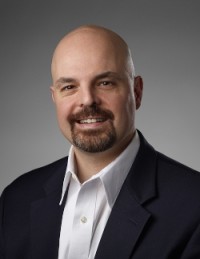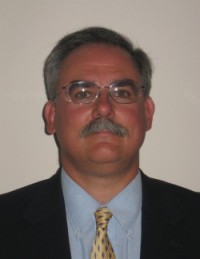You are here
Case report of a stem cell transplant supported by expanded MSC
 |  |
This case report describes a novel stem cell transplant that we performed for a girl with Fanconi anemia. Children with Fanconi anemia have genetic defects that prevent normal DNA repair. The disease leads to bone marrow failure, and also to acute leukemia and solid tumors. The only long-term solution for the marrow failure is a transplant with normal blood-forming stem cells, either from a bone marrow donor or a cord blood donor. The very first cord blood transplant in the world was performed in 1988 for a child with Fanconi anemia.
Our Fanconi anemia patient received a transplant of blood-forming stem cells from her brother's bone marrow. In an effort help her recover faster from her transplant, we also gave her Mesenchymal Stem Cells (MSC) that were extracted from her brother's bone marrow and cultured in a laboratory to expand the number of cells before infusion. The beneficial characteristics of MSC support this therapeutic approach.
Mesenchymal Stem Cells can be derived from most adult tissues including bone marrow, fat, skin and dental pulp, as well as post-natal tissues like the umbilical cord and placenta. MSC can function both as regenerative and medicinal cells. Some cord blood banks now routinely offer parents the opportunity to store MSC from cord tissue along with their baby's cord blood. Hence MSC from cord tissue are becoming a readily available resource for therapy.
Researchers hope that co-transplants with MSC can reduce the time it takes a stem cell transplant to "engraft" and replace the patient's blood and immune system. This behavior relies on the medicinal capacity of MSC: they serve a transient role supporting the healing behavior of other cells in the patient's body, and then the MSC leave the patient's system. The co-transplanted MSC might reduce the risk of stem cell transplants, both by decreasing the dangerous time period before the donor cells begin to grow, and also by avoiding graft-versus-host disease (GVHD) where the donor immune cells attack the patient.
It was suggested in a previous issue of this newsletter that MSC from cord tissue could be co-transplanted with cord blood, using both cell types from a single donor. Our case report provides proof of this concept, because our patient received blood-forming stem cells and expanded MSC from a single donor.
Before treating our first patient, we demonstrated the feasibility of co-transplants with MSC in a mouse model of Fanconi anemia. We found that the MSC enhanced blood stem cell engraftment (1). This result enabled us to apply for a single patient clinical study. The transplant was conducted under both FDA and IRB approval, and the results were presented by Dr. Goebel at the AABB 2012 annual meeting in the featured plenary session (2).
Our patient's transplant was supported by a joint industry-academic cooperation in Indianapolis, USA. The donor's bone marrow was harvested at Indiana University about two months prior to the transplant. A portion of the bone marrow was taken to the laboratory of Cook General BioTechnology, where MSC were expanded for clinical dose production. The transplant took place at Riley Hospital for Children.
The patient's transplant proceeded in phases. The first dose of MSC was infused one day before the bone marrow transplant. Following the transplant, three weekly doses of MSC were infused. A standard drug regimen was used to prevent GVHD. The patient tolerated the MSC infusions without any complications. Engraftment (defined as neutrophil count over 500) occurred 12 days after the bone marrow transplant, as compared to the typical 14-17 days following a bone marrow transplant without MSC. She is now more than one year beyond the stem cell transplant, is no longer taking any immune suppressive drugs, has normal blood counts, and has not had serious infections. Despite an increased risk for GVHD in Fanconi anemia patients, this patient has not had GVHD. Lab analysis shows that her blood system is made of 100% donor cells.
Co-transplantation with MSC offers hope for similar patients at high risk of engraftment failure and/or GVHD. The bone marrow transplant described here could be seamlessly translated to a cord blood transplant. We are excited to continue this work and look forward to the possibility of transplants using cord blood and cord tissue-derived MSC from the same donor in future studies targeting Fanconi anemia and other diseases.
Given the clinical potential of MSC, cord tissue banking should always be considered in combination with cord blood banking. It is possible that cord tissue MSC, due to their post-natal nature, could be more potent than MSC from other sources, including bone marrow. In addition to co-transplantation with blood forming stem cells, MSC could be useful to treat heart disease, rheumatoid arthritis, wounds, and sports injuries. The wide range of possible uses for these cells justifies serious consideration of banking cord tissue-derived MSC on their own. Many private banks offer this service at a significantly lower cost than cord blood banking.
The use of MSC, regardless of their origin, will be subjected to FDA regulation. There are no currently approved clinical uses of MSC in the United States. The use of these cells must be done as part of an approved clinical study, but there are a number of options to gain access to these potential therapies. If you would like to bank MSC from cord tissue, please ask your bank how they plan to help you navigate the FDA requirements for the use of your cells.
References
- Mesenchymal stem/progenitor cells promote the reconstitution of exogenous hematopoietic stem cells in Fancg-/- mice in vivo
Yan Li, Shi Chen, Jin Yuan, Yanzhu Yang, Jingling Li, Jin Ma, Xiaohua Wu, Marcel Freund, Karen Pollok, Helmut Hanenberg, W. Scott Goebel, and Feng-Chun Yang
Blood 2009 113(10):2342-2351; doi:10.1182/blood-2008-07-168138 (Full text) - Transfusion, Volume 52, issue s3, September 2012, page 13A; abstract P6-030A


